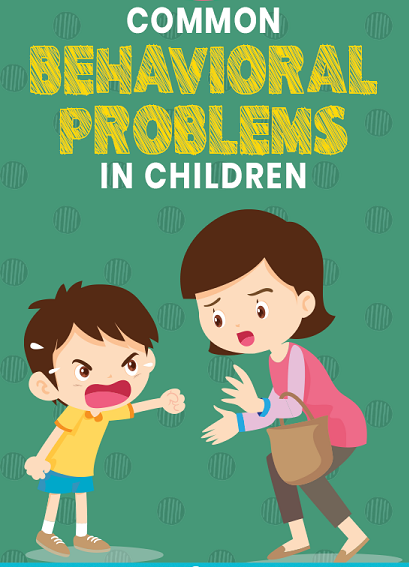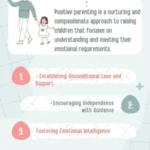In the delicate path of parenting, one of the most tough tasks is dealing with kid behavioral issues. Children, in their process of growing and learning, may display a broad variety of behaviors that may be baffling and, at times, frightening for parents. However, it’s crucial to remember that many behavioral disorders are a natural aspect of growth. Here, we will look into many kid behavioral issues, their underlying causes, and effective treatments. We want to equip parents with useful insights and practical solutions to manage these hurdles and nurture excellent behavior in their children.
Understanding Child Behavioral Problems
What Constitutes a Behavioral Problem?
Child behavioral issues cover a wide variety of behaviors that may be disruptive, hurtful, or demanding. These may include temper tantrums, disobedience, aggressiveness, lying, and more. It’s vital to discern between age-appropriate actions and those that signal a problem. While some misbehavior is common, persistent and severe behaviors may necessitate intervention.

Common Child Behavioral Problems
- Temper TantrumsTemper tantrums are a natural part of a toddler’s developmental phase. Stemming from frustration or communication struggles, these outbursts are often intense and challenging for parents to manage. Understanding that tantrums are a normal expression of a child’s emotions is crucial. Implementing strategies like distraction and teaching emotional regulation helps parents navigate these challenging moments.
Defiance
Defiance in children manifests as a reluctance to follow instructions or rules. It can range from verbal disputes to outright disobedience, potentially straining the parent-child relationship. Acknowledging that defiance is a common aspect of growing independence allows parents to address it with patience and constructive discipline techniques. Setting clear expectations and consequences helps manage defiance effectively.
Aggression
Aggressive behavior, including hitting or biting, may arise when children struggle to express themselves or resolve conflicts. Teaching alternative ways to communicate and manage frustration is vital. Parents can model and encourage non-aggressive problem-solving methods, fostering healthier emotional outlets for children.
Lying
Lying is a prevalent behavioral challenge in childhood. Children may lie to avoid punishment or seek attention. Early intervention is crucial to prevent lying from becoming a habit. Creating an environment where honesty is valued and praised helps build a foundation for truthful communication.
Bedtime Resistance
Bedtime resistance is a common struggle for many parents. Children may resist sleep, leading to nightly battles. Sleep difficulties can impact a child’s behavior and overall well-being. Establishing a consistent bedtime routine and creating a calm sleep environment are essential steps in addressing bedtime resistance and promoting healthy sleep habits.
Causes of Child Behavioral Problems
Understanding the underlying causes of behavioral disorders is crucial in developing successful remedies. Several reasons contribute to these issues:
Developmental Stage: The age of a child plays a significant role in shaping behavior. For instance, toddlers navigating the early stages of independence may exhibit more tantrums and challenging behaviors as they grapple with newfound autonomy. Recognizing and adapting to the unique developmental needs of each stage is crucial for effective parenting.
Environmental Factors: The environment in which a child grows can heavily impact behavior. Stressful family dynamics, exposure to violence, or significant life changes like relocation can contribute to the emergence of behavioral issues. Addressing and mitigating these environmental stressors is vital for fostering a supportive atmosphere for children to thrive.
Parenting Styles: The manner in which parents approach discipline and structure profoundly influences a child’s behavior. Inconsistent discipline, excessively permissive or authoritarian parenting, and a lack of clear structure may pave the way for behavior disorders. Understanding and adopting a balanced and responsive parenting style is instrumental in promoting healthy behavioral development in children.
Effective Solutions for Child Behavioral Problems
Addressing child behavioral issues demands a multi-faceted strategy. Here are some successful ways for parents:
Positive Reinforcement
Encouraging excellent conduct in children involves the consistent application of positive reinforcement. By praising and acknowledging their good actions, parents reinforce the idea that positive behavior is valued and appreciated. This not only boosts a child’s self-esteem but also creates a positive association with behaving appropriately.
Set Clear Expectations
Establishing explicit norms and expectations for behavior is fundamental in providing children with a framework for understanding right from wrong. Communicating these expectations clearly ensures that children are aware of the consequences associated with both good and negative conduct. This clarity contributes to a structured environment where children can thrive.
Consistent Discipline
Consistency is paramount in disciplinary measures. Enforcing punishments for misconduct consistently and fairly helps children understand the boundaries and expectations. Predictability in consequences fosters a sense of security, enabling children to anticipate the outcomes of their actions.
Effective Communication
Encouraging open and honest communication with children is essential for addressing behavioral issues. Actively listening to their problems and emotions allows parents to identify root causes of misbehavior that may stem from a lack of ability to express feelings. Effective communication builds trust and strengthens the parent-child relationship.
Seek Professional Help
When behavioral issues persist or reach a severe level, seeking assistance from a child psychologist or counselor is a proactive step. These professionals possess specialized knowledge and can provide unique tactics and interventions tailored to the child’s specific needs. Professional help ensures a comprehensive approach to addressing and managing behavioral challenges.
Conclusion
Child behavioral difficulties may be tough, but they are a natural part of a child’s growth. As parents, it’s crucial to handle these difficulties with patience, understanding, and effective techniques. By addressing the core issues, utilizing positive reinforcement, and getting professional assistance when required, parents may steer their children towards more positive conduct and healthier emotional development.
FAQs
1. What are frequent symptoms of kid behavioral problems?
Common indications include temper outbursts, stubbornness, violence, dishonesty, and resistance to norms or routines.
2. Are all kid behavioral disorders a reason for concern?
No, many behavioral disorders are a natural component of growth. However, chronic or severe difficulties may necessitate action.
3. How can I help my kid to voice their feelings?
Create a secure and non-judgmental environment for your youngster to express their feelings. Encourage them to use words to convey how they feel.
4. What role does consistency have in managing behavioral problems?
Consistency in discipline and expectations helps youngsters grasp limits and consequences, leading to more predictable conduct.
5. When should I consider obtaining professional treatment for my child’s behavioral problems?
If behavioral issues continue, intensify, or interfere considerably with everyday living, it’s important to visit a child psychologist or counselor for help and intervention.





